Media | Articles
Final Parking Space: 1984 Jeep Cherokee Chief
The XJ Jeep Cherokee was a genuinely revolutionary vehicle, manufactured in North America for nearly 20 years—and far beyond that in China. Discarded examples of the XJ are still fairly commonplace in American car graveyards, including examples with astronomically high final odometer readings, but the very early ones have become quite rare. Here’s one of the very first XJs ever built, found in a Denver-area yard recently.
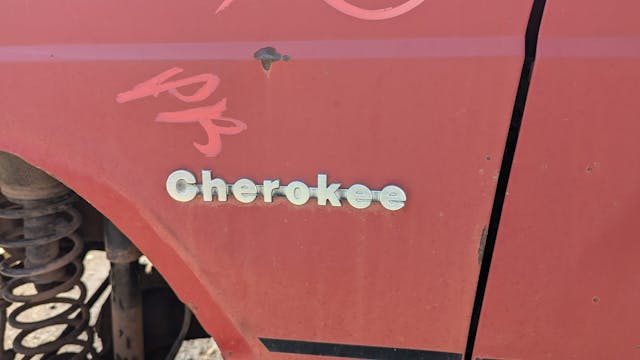
American Motors first used the Cherokee name on a two-door version of the massive SJ Wagoneer, which was sold for the 1974 through 1983 model years. When the XJ debuted for 1984, the Wagoneer name was used for its top trim level, while the SJ Wagoneer remained in production as the Grand Wagoneer.

“Chief” was the name for an option package that included air conditioning, nicer seats, and an AM/FM radio.

For 1984, all XJs were equipped with four-wheel-drive; rear-wheel-drive versions became available during the following year.

Only two engine choices were available for the 1984 XJ, the base 2.5-liter AMC straight-four and the optional 2.8-liter GM V-6. This truck has the 2.5, with 105 horsepower.
Marketplace
Buy and sell classics with confidence

GM’s Iron Duke 2.5-liter straight-four looked very similar to the AMC 2.5 (as did the unrelated Chevrolet Nova 153, aka 2.5-liter straight-four); when coupled with the fact that GM V-6s were used in these trucks, decades of GM-versus-AMC engine confusion among parts-counter employees was inevitable. The same sort of mixups in engine identification bedeviled Grand Wagoneer owners after Chrysler bought AMC in 1987, because both Chrysler and AMC 360-cubic-inch V-8s remained in production.

AMC started bolting the 4.0-liter version of its sturdy straight-six into the XJ beginning with the 1987 model year, and sales of these trucks with that engine’s four-banger cousin fell off a cliff immediately (though you could still get a new XJ with AMC 2.5 power into the middle 1990s).

105 horses in a four-wheel-drive machine scaling in at around 3500 pounds meant that drivers needed patience during acceleration, but at least this truck has the optional five-speed manual to make the experience somewhat less miserable. A four-speed manual was base equipment on 2.5-equipped XJs for 1984.

The XJ was designed while American Motors was part of the Renault Empire, with the legendary François Castaing and his crew of French engineers as its masterminds. The XJ Cherokee had nearly as much interior room as its SJ predecessor, but its unibody structure meant that it weighed 1200 pounds less and—most importantly—drove more like a car than a truck.

So, here was a tough-looking truck that looked properly outdoorsy and did well enough off-road … and could still take you to work in reasonable comfort while getting acceptable fuel economy.

Forty years later, vehicles that look like trucks yet drive (somewhat) like cars dominate North American roads. Whether you approve or not, the XJ deserves the credit/blame for today’s automotive landscape. Meanwhile, Chrysler’s introduction of its huge-selling minivans as 1984 models dealt a second huge blow to station wagon sales in North America.
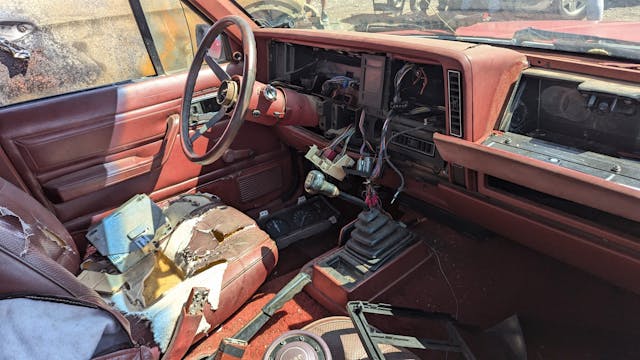
When Lee Iacocca had Chrysler buy AMC in 1987, the Jeep brand in general and especially the XJ Cherokee were the main prizes he sought for his company (though the in-development ZJ-platform Grand Cherokee, which crashed into American hearts five years later, was a factor as well). As an added bonus, Chrysler got the Eagle Premier, which provided a treasure trove of advanced suspension engineering from Europe that ended up going under the big-selling LH-platform cars. Naturally, François Castaing was kept on as part of the deal.

The XJ was available here through the 2001 model year, and it’s possible that some outfit is still making copies in China right now.

The XJ has a strong enthusiast following, although most prefer the 4.0-powered models to the underpowered early 2.5- and 2.8-equipped trucks.
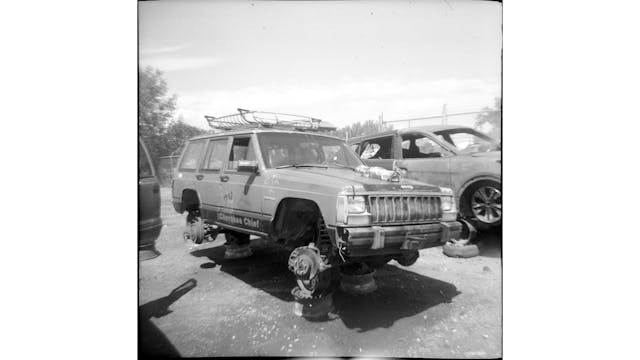
The day I visited this yard, I brought along a 127-film camera that was given away by Rambler dealers as an inducement to shoppers who test-drove the ’63 models. My plan was to shoot a 1965 Rambler Cross Country wagon—in the same boneyard at the time—with the appropriate camera, and I got a couple of shots of its AMC-built descendant while I was there.

A Chrysler-era 1988–2001 XJ would have required my Imperial Satellite camera, or perhaps its Imperial Savoy cousin. All three cameras were made by Chicago’s Imperial Camera Corporation at around the same time, but I prefer to shoot AMC products with the Rambler.

That’s because the famous Rambler Ranch, located not far from this Cherokee Chief’s final parking space, has a genuine Imperial Rambler camera on display.

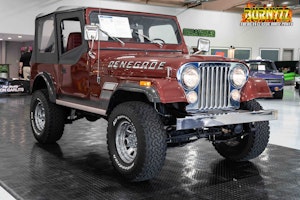

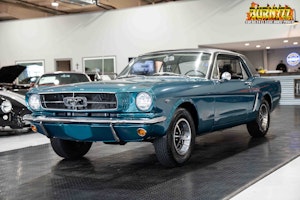
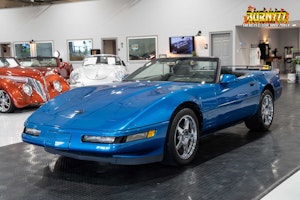
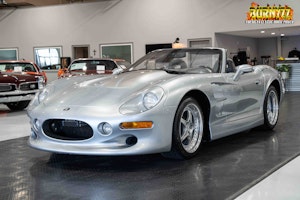


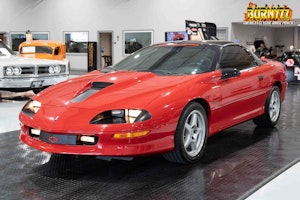
































































I have always liked the boxy look of these. Salt destroyed them where I live so few decent ones are ever seen.
These have a large following for period correct mid 90’s film and TV production…I bought items from this yard; front disc rotors
for a 1987 Pontiac 6000 STE
The supply distributor I worked for had one of these as a company car back in the ’80s. We were in Toledo, so it made sense to have one. We also had Fords so we didn’t hurt ourselves with them.
Funny story, we had a Region Manager (somewhat rotund) in for a couple days and when we went to lunch the passenger seat belt wasn’t long enough to fit around his belly. Being substantially younger and thinner in those days, I had a hard time not laughing out loud. Luckily, I was in the back seat.
This one’s been picked at for sure. They were fun but didn’t last well in the rust belt.
these were great cheap used cars up until about 8-10 years ago and I always kept an eye out for them to put on the lot; they’re still great but they ain’t cheap anymore, at least for nice ones